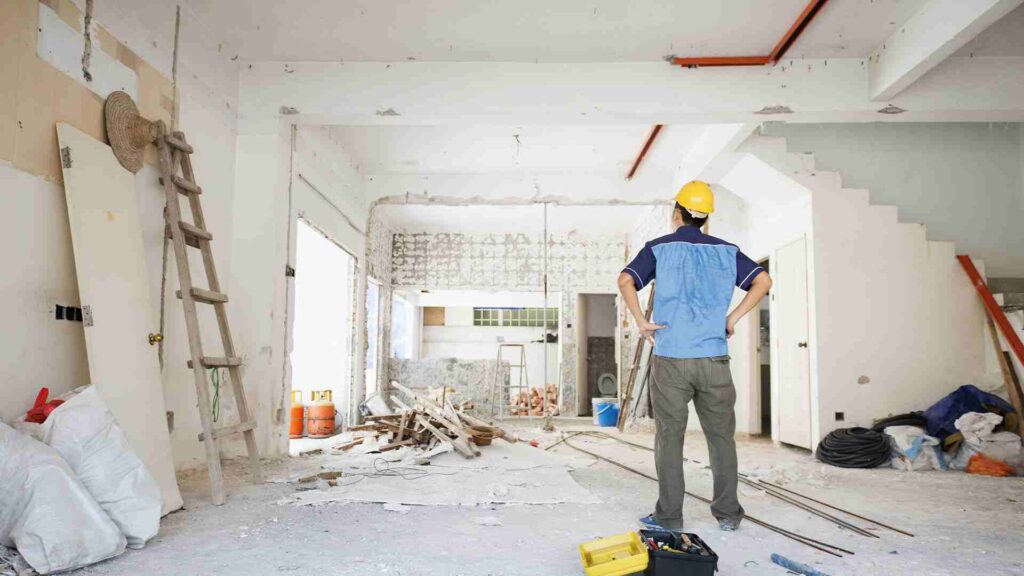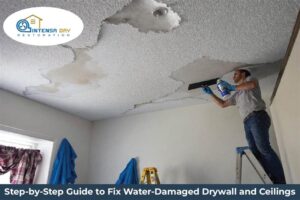Blogs
How to Minimize Disruptions During Home Reconstruction in Plano

Embarking on home reconstruction in Plano can be both exciting and challenging, requiring a delicate balance between enhancing your living space and minimizing disruptions. This guide aims to provide practical insights and strategic approaches to ensure a smoother reconstruction process. From creating detailed timelines and effective communication with contractors to addressing the logistical aspects of temporary living arrangements, each facet plays a pivotal role in streamlining the experience. By navigating local regulations, implementing smart construction practices, and preparing for unforeseen challenges, homeowners can proactively minimize disruptions. Whether you’re planning a renovation or a comprehensive reconstruction, this guide offers valuable strategies for a successful and less disruptive outcome. Additionally, we will delve into the importance of securing valuables and protecting belongings, offering guidance on mitigating noise and dust during construction. The proactive establishment of realistic expectations and adherence to local regulations ensure a smoother journey through the reconstruction process. Smart budgeting practices and post-reconstruction cleanup tips will also be explored to help homeowners comprehensively navigate the various phases of the reconstruction project. Whether you’re a first-time renovator or experienced homeowner, this guide aims to empower you with the knowledge and tools needed to minimize disruptions and create a harmonious living environment throughout the reconstruction journey in Plano.
Seamless Home Reconstruction in Plano: Strategies to Minimize Disruptions
Embark on a transformative journey with Intensa Dry as we guide you through minimizing disruptions during home reconstruction in Plano. Elevate your living space seamlessly.

Strategic Planning for Home Reconstruction in Plano:
Strategic planning is the cornerstone of a successful home reconstruction services project in Plano. Begin by thoroughly assessing the scope of work required and create a detailed plan that outlines each phase of the reconstruction process. Identify key milestones, allocate resources efficiently, and establish realistic timelines. Consult with experienced contractors to gain insights into potential challenges and devise contingency plans. This strategic approach will not only streamline the reconstruction process but also help in minimizing unexpected disruptions.
Creating a Detailed Reconstruction Timeline:
A detailed reconstruction timeline is crucial for managing expectations and ensuring a smooth flow of work. Break down the project into smaller tasks and assign realistic deadlines for each. Consider factors such as weather conditions, material delivery times, and potential setbacks. Share the timeline with contractors and workers to foster accountability and transparency. Regularly revisit and update the schedule as needed, addressing any unexpected delays promptly. A well-constructed timeline serves as a visual roadmap, allowing all stakeholders to stay on the same page and contributing significantly to minimizing disruptions during home reconstruction in Plano.
Effective Communication with Contractors and Workers:
Open and effective communication is vital throughout the reconstruction process. Establish a clear line of communication with contractors, workers, and any other parties involved. Regularly scheduled meetings and updates can help address concerns, clarify expectations, and foster a collaborative environment. Encourage an open dialogue where everyone feels comfortable sharing progress, challenges, and potential solutions. This proactive approach can prevent misunderstandings, ensure that everyone is on the same page, and ultimately contribute to a more efficient and less disruptive reconstruction experience.
Temporary Living Arrangements: A Comprehensive Guide:
During home reconstruction in Plano, it’s essential to consider temporary living arrangements to minimize disruptions for your family. Explore options such as renting a nearby property, staying with friends or family, or utilizing short-term housing services. Plan for the logistics of moving and consider the proximity to the construction site to reduce commuting time and stress. Additionally, ensure that you have the necessary essentials in your temporary space to maintain a semblance of normalcy. A well-thought-out plan for temporary living can significantly reduce the impact of the reconstruction on your daily life and provide a more comfortable experience for your family.
Minimizing Noise and Dust: Smart Construction Practices:
Construction projects often generate noise and dust, which can be disruptive and affect your living conditions. Work closely with your contractors to implement smart construction practices that minimize these inconveniences. This may include scheduling noisy activities during specific hours, using dust barriers, and employing advanced dust control technologies. By addressing these factors proactively, you can create a more livable environment during the reconstruction process, reducing disturbances for both you and your neighbors.
Securing Valuables and Protecting Belongings:
Home reconstruction can expose your belongings to potential damage. Take proactive measures to secure valuables by relocating them to a safe and unaffected area of your home or storing them off-site. Consider investing in protective coverings for furniture and other items that cannot be moved. Clearly communicate with your contractors about areas that require special attention or protection. This foresight will not only safeguard your possessions but also contribute to a smoother reconstruction process, as workers can focus on their tasks without the added worry of causing damage to your belongings.
Setting Realistic Expectations for Home Reconstruction:
Realistic expectations are crucial for a positive reconstruction experience. Understand that unexpected challenges may arise, and timelines might need adjustments. Discuss potential delays or changes with your contractors in advance, and work together to find solutions. Managing expectations also involves being realistic about the disruptions you might face during the process. By acknowledging potential inconveniences and preparing for them mentally, you can navigate the reconstruction with a more positive outlook and a greater ability to adapt to changing circumstances.
Adhering to Local Regulations and Permits:
Compliance with local regulations and obtaining the necessary permits is essential for a smooth and uninterrupted reconstruction process. Research and understand the specific requirements in Plano for your type of project. Failing to adhere to these regulations can lead to delays, fines, or even the halting of construction. Work closely with your contractors to ensure all necessary paperwork is in order before starting the project. This proactive approach will contribute to a more seamless reconstruction experience while avoiding potential legal complications.

Smart Budgeting for Unforeseen Challenges:
Financial planning is a key aspect of minimizing disruptions during home reconstruction. While creating a budget, set aside a contingency fund for unforeseen challenges or unexpected expenses. This reserve can act as a buffer, allowing you to address issues without derailing the entire project. Regularly review the budget with your contractors to ensure transparency and make adjustments as needed. A well-prepared budget not only helps you navigate the financial aspects of the reconstruction but also provides a sense of security in the face of unexpected challenges. While navigating the intricate process of home reconstruction in Plano, implementing essential tips for maintaining safety becomes paramount, ensuring a secure environment for both occupants and workers; concurrently, understanding how to minimize disruptions plays a crucial role in streamlining the reconstruction process and maintaining a sense of normalcy during the restoration journey.
Post-Reconstruction Cleanup and Restoration Tips:
The reconstruction process doesn’t end when the construction work is complete. Plan for a thorough post-reconstruction cleanup and restoration to ensure your home is returned to its pre-construction state. Coordinate with your contractors to address any lingering debris, dust, or construction materials. Consider professional cleaning services to tackle deep cleaning tasks. Inspect the completed work with your contractors and create a punch list of any remaining items that need attention. By prioritizing this final phase, you can transition back to a fully functional and comfortable living space more efficiently, minimizing disruptions after the construction is complete.
FAQ’S
Q: How can I minimize noise and dust during home reconstruction?
A: Implement smart construction practices, such as scheduling noisy activities during specific hours, using dust barriers, and employing advanced dust control technologies. These measures help create a more livable environment and reduce disturbances for both residents and neighbors.
Q: What steps can I take to protect my belongings during reconstruction?
A: Secure valuables by relocating them to a safe area, investing in protective coverings for furniture, and communicating with contractors about areas that require special attention or protection.
Q: How do I set realistic expectations for home reconstruction?
A: Understand that unexpected challenges may arise, discuss potential delays with contractors in advance, and mentally prepare for possible disruptions during the process.
Q: What role do local regulations play in minimizing disruptions?
A: Adhere to local regulations and obtain necessary permits before starting the project. Compliance ensures a smoother reconstruction process and avoids potential delays, fines, or legal complications.
Q: How can I prepare for unforeseen challenges during reconstruction?
A: Smart budgeting is crucial. Set aside a contingency fund for unexpected expenses, regularly review the budget with contractors, and make adjustments as needed to navigate unforeseen challenges without derailing the project.
Conclusion
In conclusion, minimizing disruptions during home reconstruction in Plano demands meticulous planning and proactive measures. Strategic planning, effective communication with contractors, and creating a detailed reconstruction timeline are fundamental to success. Residents should anticipate challenges, set realistic expectations, and adhere to local regulations. Practical steps such as securing valuables, implementing smart construction practices, and budgeting for unforeseen challenges contribute to a smoother experience. By considering temporary living arrangements and prioritizing post-reconstruction cleanup, homeowners can navigate the process with greater ease. The synergy of these elements fosters a more efficient, less disruptive reconstruction, ensuring a positive outcome for both the property and its occupants. Homeowners in Plano should embrace a collaborative approach with contractors, fostering open communication to address concerns promptly. Mitigating noise and dust through technological solutions and protective measures preserves the living environment. Adherence to local regulations not only ensures legal compliance but also prevents potential setbacks. Through meticulous planning, realistic expectations, and a well-allocated budget, residents can navigate the reconstruction process with confidence. Ultimately, a comprehensive strategy that encompasses both the construction phase and post-reconstruction considerations contributes to a successful project, allowing homeowners to return to their renewed space with minimal disruptions and a sense of accomplishment.

